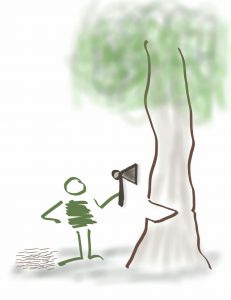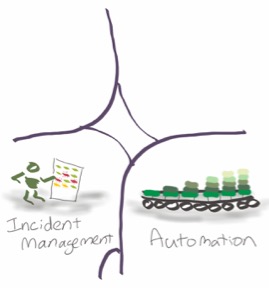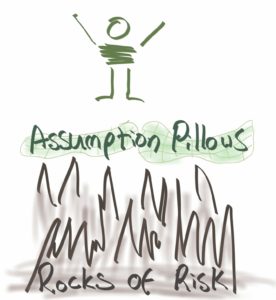Category Archives: Lightning Blog
OFFICE SPACE AND SEATING ARRANGEMENTS HAS IT GONE FULL CIRCLE.
Nowadays most of us spend most of our lives in an office type environment.
The idea of an effective work environment has always been present and yet often rarely discussed or analysed by most of us, myself included. I just know what I like and often modify my surroundings to make the best from a less than ideal situation.
The old school office/cubicles strategy, was rooted in hierarchy and even class structure. The “us and them” school of though between “management” and “labour”, yet it did allow for personal and private spaces which meant an inherent feeling of safety and ownership.
The open plan strategy, has its ideology based in the “we are a team” and “we are all the same” mindset. These ideas have issues in a work place; the bigger the team the more difficult to find harmony and we are not all the same. The funniest thing about the open plan office space is that a major reason for its popularity is not to develop an effective work environment but that its cheaper per headcount by easily fit more staff into smaller spaces and also that you can see everyone, giving the illusion of control.
The simple fact is that we often ignore or actively block out our environment be it work or otherwise. Details of our environment and how they effect our mental state, often go unnoticed and therefore are allowed to impact us without being monitored or adjusted.
How many of us remember the office spaces of our past and television sitcoms, cubicles, isolated offices and founded in the “us and them mentality”. Nowadays, we have the antithesis, being touted as the best option, the open plan, no partitions idea of office space. The driving force behind each extreme model, is only partly based in trying to allow for effective work.
The irony is that, as humans we need interactions with others and also our private space. Much like marine fish in a fish tank, I’ll get back to this later.
The traditional office space of the decades past, was one of higher management nested in largish offices around a space of partitioned cubicles. This lay out although not great had it’s merits. The physical barriers allowed the occupants to have a sense of private space and belonging. The ocean of cubicles provided a pocketed approach to office space, reminiscent of battery hens. Each isolated and working to produce, under the watchful eye of the farmer/manager.
As time and ideas changed the partitions got smaller in height and less common, the offices reduced in number and common areas began to spring up. The idea of this was to remove the barriers physically and hopefully mentally from the work space to allow for communication and a sense of community and partnership, to hopefully evolve.
The interesting fact is that different cultures behave differently but people tend to require the same things.
Ironically as the physical barriers, like walls and partitions, have been reduced or completely removed others have been erected to fill a need. The partitions have gone but the need for private spaces has meant that isolationist devices have become common place. The modern office space is open plan and headset isolated. The human need for self-space has replaced the partitioned cubicles with the modern cultural equivalent of isolation tanks.
The supposedly open office to encourage freedom and so we can have a sense of community and belonging has gone full circle to the isolationist mentality of boxes.
The mental isolation in the modern open plan work space is, far more detrimental than the cubicles of old and more difficult to see.
Personally I felt happier in cubicles, with lowish partitions and one glass partition so natural light could be allowed further into the room. The partitions were set out in blocks of four or six and sometimes even eight, allowing for team groupings and interactions.
The partition walls were low enough to see over, when you were standing but high enough to utilise them as extra work surfaces for charts and the tracking of work in progress. The sense of privacy was there and you also had a sense of belonging. You could hear others if you wished to focus or easily ignore the office murmurs.
If you have ever kept a marine aquarium or any fish tank for that matter there is a paradox which occurs when stocking your aquarium.
“The more hiding places there are the more you see your fish and the less stressed they are.”
In a marine environment fish are constantly on the look out for predators and prey alike, always aware and highly observant. The fish in a tank are no different, being exposed is stressful and a bad thing. A stark and barren environment, is a terrifying place and that is why fish kept in these conditions are rarely seen and often found cowering in what few corners or hiding spots there are. An aquarium with lots of hiding spots and ample swim throughs will make the inhabitants feel safe since they can always dart into a secluded spot, when danger is felt.
Maybe we should bare this in mind when designing work spaces.
A final thought is that traditionally homes are designed with common areas, lounge and living rooms, common rooms for eating and cooking and most importantly private zones the bedrooms.
Effective Efficiency
Efficiency is not a good goal, effectiveness is a better goal.
What do we mean by being efficient? In simple terms it means doing a good job, a job that has the intended outcome with the minimal amount of effort. At an organisational level this is usually interpreted as saving costs and that can lead to what I would call some ‘cheap and nasty’ outcomes.
So we have started to rebel against the cost-cutting aspects of efficiency and are now very focused on effective outcomes…almost to the point that using the word ‘efficient’ is not really acceptable.
We can be both effective and efficient, and we should be. It’s a good idea to monitor for opportunities to reduce waste, while being selective about which types of waste make sense to keep or reduce.
The one place that it makes sense to be less efficient is when we are tackling complexity. This requires a probing, exploratory approach which can actually be more effective when it is not super-efficient…because we are looking for things which we are uncertain about.
The thing that holds the thing that the Stakeholders were holding
 So we all know about stakeholders…those people that care about what we are doing and should have a say in what happens.
So we all know about stakeholders…those people that care about what we are doing and should have a say in what happens.
Are there also people that care about the thing that the stakeholders care about that we would not call stakeholders?
What does the ‘stake’ mean when we refer to the stakeholder? According to Wikipedia, the term originally referred to the person who temporarily held the stakes from a wager until the outcome was determined. Business has since co-opted the term to mean people interested or impacted by the outcome of a project.
Tobbe and I were having burgers for lunch today…they were so tall that they had skewers in them to keep them together. So the chef held the skewer (stake) and we held the skewer when we ate the lunch, but the person serving us never touched the skewer…just the plate that supported the burger with the skewer in it.
That got us thinking about what supports the interests of the stakeholders, and yet, is not a stakeholder of a project or outcome?
It may be what we call governance. The scaffolding in an organisation that ensures that business interests are looked after…ensuring that our burgers arrive safely and without toppling over onto the floor.
ITSM and Cynefin – Lightning Blog
I attended the itSMF 20th Anniversary Conference in Melbourne this week and it was great to see the emphasis from many speakers about automation and using DevOps principles.
The Cynefin Framework is subjective and I was thinking about where many of us see the service management framework and ITIL on it. It is easy to imagine incident management in the chaotic domain and standard change management processes in the obvious domain (highly repeatable and therefore great candidates for automation).
So it was interesting to see the keynote from Lindsay Holmwood titled ‘Mixing Oil and Water: DevOps in an ITSM World’ where Lindsay busted the myth that DevOps and ITSM don’t mix. ITIL and the service management framework are great tools to identify the candidates for automation and for where to ‘build in’ governance to our continuous deployment pipelines.
If we want to get into the market with safe and small changes that take into account operability, security, regulatory requirements, and resilience, we really need to partner with our service management colleagues.
Assumption Pillows – Lightning Blog
Expanding the thoughts behind a recent tweet of mine.
‘Pondering….less obvious reasons…generate ‘pillows’ of assumptions…and are ineffective cushions against the sharp rocks of risk below’
Assumptions are like pillows – they are very comfortable and we are not aware of them for much of the time. The trouble is that our assumptions and the assumptions of other people that we are working with are likely to be different. When we don’t inspect our assumptions, we can overlook risks – so that is why our assumptions are like pillows.
It can feel like a waste of effort to inspect our assumptions – there are ways of working them into a workshop facilitation plan – that’s the easiest one to address.
Another way is to be aware of the feeling that something is not quite right in a conversation. Once I was negotiating a contract and almost starting to argue with the other party about a particular point – both of us thought that the other one was being a bit unreasonable. After a short break, we took a moment to clarify what we were discussing and it turned out that we both agreed the point, but had been discussing quite different things before the short break.
The main risk that assumptions cause in projects is delay. If we find ways to highlight assumptions earlier we can save wasted effort in circular discussions, rework or duplication.
It’s better to see the sharp rocks of risk than to cover them with assumption pillows.
LIGHTNING BLOGS – THE RULE OF THREES, OR THE RULE OF THIRDS.
LIGHTNING BLOGS
Welcome to the first in my lightning blog series. This series is for the ideas and observations we all make during our daily lives and rarely share or have time to explore them.
THE RULE OF THREES, OR THE RULE OF THIRDS.

The rule of threes is an observation I made while trying to save energy and money by examining and swapping light bulbs and the mode of generating the emitted light.
Sounds great and very intellectual but as usually happens you do something and then upon reflection realise there appeared to be a pattern. I actually was just trying to swap over to the newer 6 Watt LED bulbs, I had recently found in my local supermarket, to save money because my energy bills are creeping up there and starting to hurt (mother of invention).
I had swapped all the lights in my house with these 6 Watt LEDs, except for the two main lights in my kitchen and the dinning area. The reason these two lights hadn’t been swapped over, was that they were 18 Watt Fluorescent tubes. Well, finally the day came and I had decided it was time to do the swap. When I began to remove the fixtures, I noticed that they were not the original fixtures but had themselves been replacements for the type of light that was there previously. The original light fixtures were actually lamp holders, just like the type of fixture I was installing, great less touch up work.
Then it struct me, when the house was built the dominant form of lighting was incandescent bulbs. Incandescent bulbs ranged usually from 100 Watts to 60 Watts in your typical single light fixture for a room. Yes they made smaller bulbs 40 Watts and even as low as 20 Watts, but these were usually the bulbs used for bedside lamps or in chandeliers. The most likely scenario was that the original lamp holder would have held a 60 Watt bulb due to the small room size.
So what we had was a situation where if they had put a smaller bulb than 60 Watts the room would be poorly lite, however at the time, the more cost effective technology of fluorescent lighting would have meant a 20 Watt florescent tube would have given more light than the 60 Watt incandescent for a third of the cost. In fact the florescent tube would have probably given out the equivalent light from a 75 Watt bulb or more.
Now the fluorescent tube I was replacing was in fact, a newer more efficient 18 Watt florescent tube. Yet it struck me that I was now installing a 6 Watt bulb that was one third the wattage of the one I was removing. I also realised that the fluorescent must have been replacing a bulb at least three time the wattage as itself.
The rule of threes or thirds was born.
So did this mean that only when something became three times better or more efficient or used a third of the energy or effort, that we actually muster enough motivation or pressure to change?
Can the rule of threes be seen in other areas or even help us to decide when retooling or changing the way we work is most beneficial?
Like I said observations and ideas only in the Lightning Blogs. Food for thought and I hope the rule of threes or thirds may help in some way to guide you in your decision making.
Yes I know wattages do not equal Lumens but for simplicity, I didn’t go into that.
From Wikipedia : The luminous efficacy of a typical incandescent bulb is 16 lumens per watt, compared with 60 lm/W for a compact fluorescent bulb or 150 lm/W for some white LED lamps.
PS. Careful how you pronounce, The Rule of Thirds, it could be misunderstood as something else.



